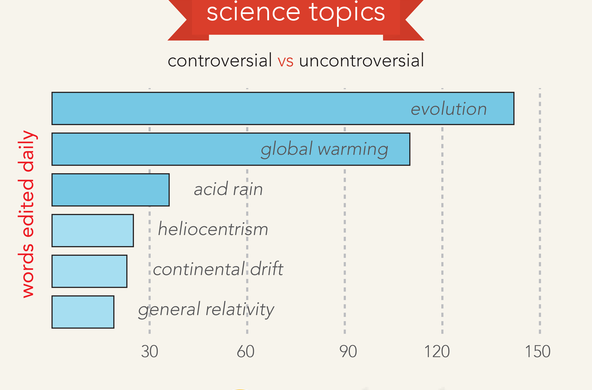If you remember the 1970s and 80s, you probably remember acid rain. In the 1960s, after learning rainwater in the Hubbard Brook Experimental Forest in the White Mountains of New Hampshire was a hundred times more acidic than expected, Gene Likens traveled the globe, installing rainwater analysis stations in some of the most remote regions on Earth.
When stations in areas unaffected by human industry reported normal levels of rainwater acidity, Likens took to the skies. He flew over Ohio in a small plane, chasing plumes of factory emissions while collecting samples out the aircraft window.
Likens and his team uncovered the process by which industrial emissions combined with water vapor to create rainfall acidic enough to visibly damage buildings and infrastructure—and, more insidiously, harm ecosystems, especially delicate aquatic ones, killing fish and plant life. They found the effects could spread hundreds of miles from the emissions source.
Likens had to speak out. His new aim was to educate the public and lawmakers about the dangerous effects of acid rain. His advocacy led to amendments to the Clean Air Act in 1990, which drastically curbed the impact of acid rain in the U.S.
Gene Likens was born in northern Indiana during the Great Depression. His family lived in a rustic log cabin on a small farm owned by his grandparents and, though they struggled financially, he enjoyed a happy childhood. Likens spent as much time outdoors as possible, walking barefoot on the shorelines of ponds and hiking through the forest. He grew up close to the land and, he says, that early exposure sparked a lifelong fascination with the natural sciences.
At first, science was more of a secondary passion. Likens really wanted to become a professional baseball player and played in the rookie leagues in Kansas, even making the All-Star team. At Manchester College, he took a few obligatory science classes, but intended to become a high school basketball coach.
He only took the graduate record exam to appease a persistent teacher, who was adamant that Likens pursue a graduate degree in the sciences. Likens performed so well on the exam that he decided to attend graduate school.
Ecosystems caught his attention as a graduate student at the University of Wisconsin-Madison, not only because of his deep love of nature, but also because he enjoyed exploring the complexity of the natural world.
For more than 50 years, Likens has worked at the cutting edge of ecosystem science to advance our understanding of the processes that support life on Earth and how humans alter these processes at local and global scales.
In 1963, Likens was teaching aquatic ecology at Dartmouth when he and three colleagues founded the Hubbard Brook Ecosystem Study at the Hubbard Brook Experimental Forest (HBEF) in New Hampshire and pioneered the use of watersheds—land areas that form the basin supplying water to rivers or lakes—as a method of studying the health and function of an ecosystem.
In a watershed, plant life, animals, soil, air, and water all interact, creating a complex puzzle. Likens applied a simple medical metaphor to his work: Physicians use blood chemistry to examine patient health. Could the chemistry of stream water be used to diagnose the ecological health of watersheds?
If the chemistry of stream water flowing from a watershed were different than expected, the soils, roots, trees, and microbes could be analyzed to figure out why it’s different. It is an important question—conditions within a watershed affect not only life in that area, but all future locations through which the passing water will flow. Ultimately, all ecosystems (watersheds) are connected.
At the very beginning of his research at HBEF, Likens found that precipitation in the Hubbard Brook Valley was unusually acidic—at least 100 times more acidic than expected. Was the high level of acidity specific to the area? How long had it been this acidic? Where did the acidity come from? What effect did the acidity have on trees and other organisms?
These questions spawned a series of studies on the ecology of Hubbard Brook Valley. Likens and his team traveled to the most remote regions on the planet in search of answers. They installed precipitation collection stations all over the world—in Southern Chile, on the southern tip of Africa, in the middle of the Indian Ocean—and found that the rain and snow at Hubbard Brook was 10, 100, even 1,000 times more acidic than the water in areas untouched by industrialization.
As Likens’s research progressed, scientists abroad were also documenting increased acidity in European watersheds. Their studies suggested that air pollution was falling on the landscape as acidified rain and snow. Likens suspected something similar was happening in North America.
Always up for a challenge, he and his team set out on a small plane and chased plumes of power plant emissions over Ohio and other places in the Midwest, collecting samples out the window.
After several years at Dartmouth College, Likens joined the faculty at Cornell University in 1969. While at Cornell, he set up precipitation collectors around the Finger Lakes near Ithaca, New York. He found the rain and snow there, too, were unexpectedly acidic. These findings indicated that acidic precipitation was a regional phenomenon, not limited to Hubbard Brook.
In a seminal 1974 study, Likens and co-author Herb Bormann identified fossil fuel combustion as the primary cause of acid rain. The effects were visible in natural and laboratory studies, from corroding infrastructure, to freshwater fishkills, to stunted forest growth.
As the data came in, Likens recognized that only an informed public could help affect change and, when he published his findings, he limited the use of scientific jargon. His papers in 1972 and 1974 made waves almost immediately and were soon picked up by newspapers and television, featuring images of buildings and headstones bearing the telltale scars of acid rain.
As documentation of acid rain impacts grew, so too did pushback from industry representatives. Likens rose to the challenge: he argued for better regulation, personally led a small team of scientific colleagues to brief President Reagan and the full Cabinet on the issue, and founded the Institute of Ecosystem Studies (now the Cary Institute of Ecosystem Studies), one of the world’s leading independent environmental research organizations, in 1983.
Committed to researching disease ecology, forest and freshwater ecosystem complexity and health, climate change, urban ecology, and invasive species, Institute scientists have been instrumental in informing environmental management practices throughout the world.
Likens’s and his colleagues’ tireless advocacy paid off when, in 1990, the Clean Air Act was amended to drastically curb the impact of acid rain in the United States. Likens had made a career of advancing scientific evidence into policy and improving communication between scientists, policy makers, the media, and the public.
A primary goal now is to improve efforts to communicate with the public about what scientists do and what their work means—to give the public scientific information in a way that they can better use it in their daily lives.
It is difficult to overstate the central role Likens’s research played in exposing the ecological consequences of acid rain in the U.S. Thanks largely to his work, the government now sponsors 28 long-term ecological sites, all modeled on HBEF. Continuously funded since 1963, the Hubbard Brook Ecosystem Study employs about 50 senior scientists and 70 students from 25 institutions who continue to conduct research there. The results of this research will continue to benefit delicate ecosystems for generations.
Among Likens’s many honors are the BBVA Foundation Frontiers of Knowledge Award in Ecology and Conservation Biology (2017), the Blue Planet Prize from the Asahi Glass Foundation (with F. H. Bormann, 2003), the U.S. National Medal of Science (2001), and the Australia Prize for Science and Technology (1994).





